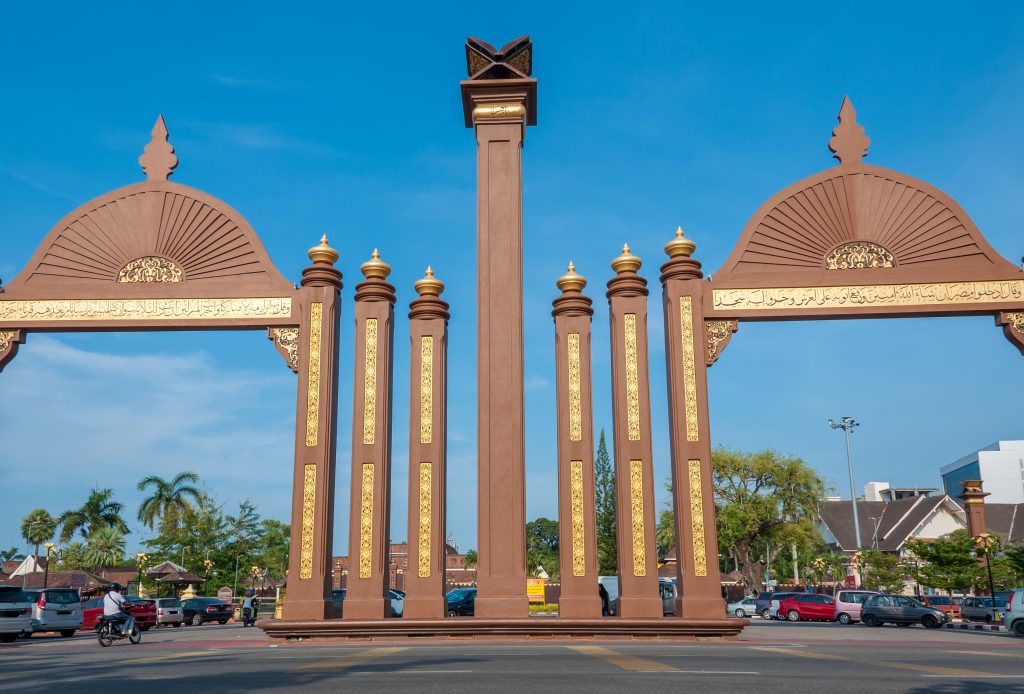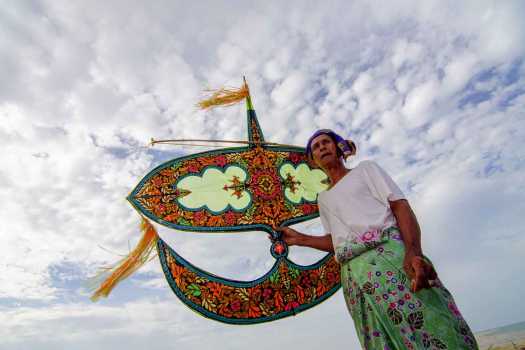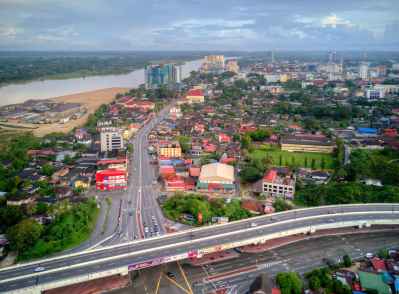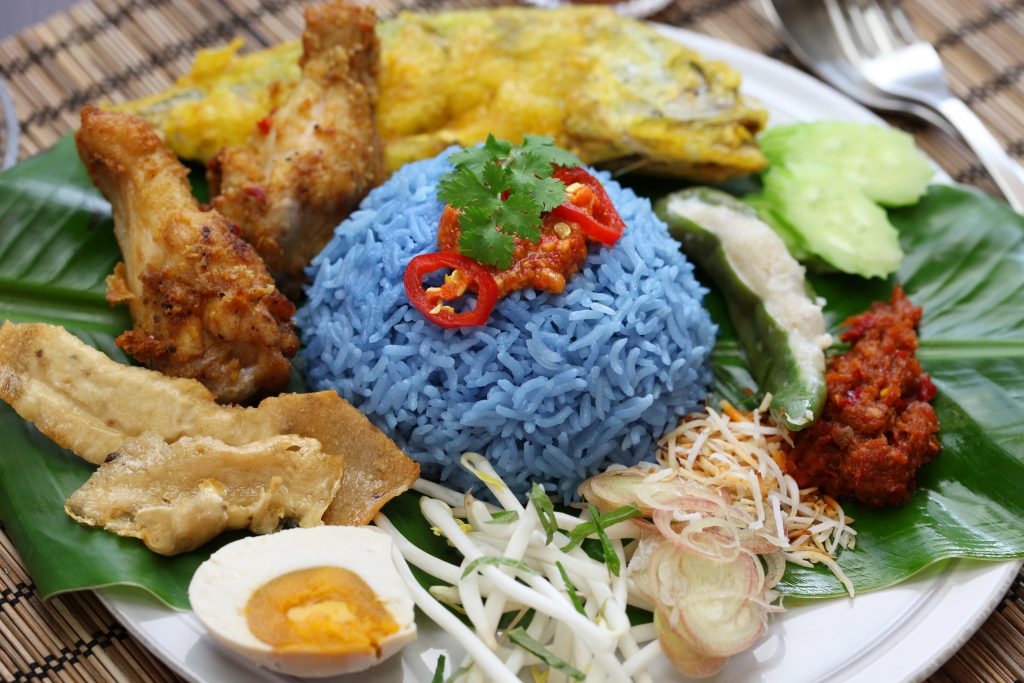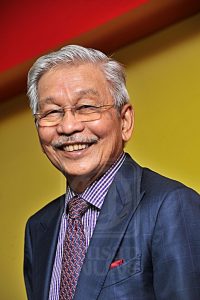HISTORY

Sultan Ismail Petra Arch at Kota Bharu
Kelantan’s early history shows human settlement as far back as prehistoric times. There is also evidence of the state’s links with the early powers of the region including Funan, the Khmer Empire, Srivijaya, Majapahit and most recently the Siamese.
Around 1411, the state under Raja Kumar appears to have become independent from Siamese control though the state’s name appears to have been derived from the Siamese word ‘Kalantan’ when the area was within its sphere of influence. Other theories on the state’s name claim that it is derived from the Malay word meaning shiny or glittery; hence ‘kilatan’.
Another occasionally quoted suggestion is that Kelantan derived originally from the Indian Kolaan Thana or Kolaam Thana, which meant “Land of Kolaan” or “Land of Kolaam”, the term kolaan or kolaam referring to the floor paintings or diagrams in the numerous Hindu temples which dotted the land in the ancient days. This theory supposes that Kolaan Thana or Kolaam Thana gradually became Kelantan to fit in better with the spoken dialect of the local people.
In 1499, Kelantan became a vassal state of the Malacca Sultanate. With the fall of Malacca in 1511, Kelantan was divided up and ruled by petty chieftains, paying tribute to Patani, then the supreme Malay Kingdom of the eastern peninsula. By the early 17th century, most of these Kelantan chiefs became subject to Patani.
Around 1760, Long Yunus, an aristocratic warlord of Patani origin, unified the territory of present-day Kelantan. He was succeeded by his son, Long Muhammad, as ruler of the state after war with the neighbouring state of Trengganu. He ruled the state as Sultan Muhammad I. His death without leaving a heir led to fighting among various claimants in the royal family. Eventually his nephew assumed the throne in 1835 as Sultan Muhammad II.
Reports from the 19th century indicate a prosperous and populous state with a population of around 30,000 to 50,000 people including a thousand Chinese. Production from within the state included gold, tin ore, black pepper, areca nut, rice, rattan, bamboo, agarwood and songket. Kota Bharu also acted as an entrepot for goods due to its strategic location beside the Kelantan River.
Sultan Muhammad II is credited with establishing the modern state after leveraging on his loose alliance with Siam, the regional power at that time. He also established the state capital in Kota Bahru where he had built his royal palace in 1844.
The next stage of Kelantan’s development took place in 1909 when under the terms of the Anglo-Siamese Treaty of 1909, the Siamese relinquished their claim over Kelantan, Terengganu, Kedah and Perlis to Britain, and Kelantan became one of the Unfederated Malay States with a British Adviser. Prior to this the four northern Malay states had been regarded as tributary or vassal states of Siam and had sent annual tribute of bunga mas to Bangkok.
Kelantan was where the Japanese first landed during their invasion of Malaya, on 8 December 1941. In 1943, Kelantan was transferred by the Japanese to Thailand and became a province of Thailand. Kelantan reverted to British protection upon the end of World War 2 in August 1945 and became one of the states of independent Malaya in 1957.

